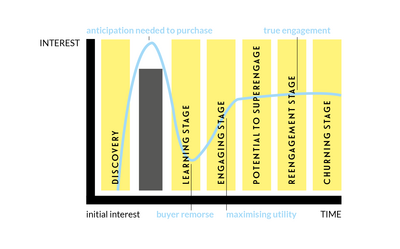
Please install a more recent version of your browser.
15 January 2018
5 minutes read
During our most recent Expert Day for game developers, Unity Technologies evangelist and author of Games As A Service: How FreeToPlay Design Can Make Better Games, Oscar Clark introduced the audience to his seven rules of monetisation design. For those who weren’t able to attend, here’s a concise summary of his talk.
Money and video games: it will never be a perfect marriage. Most questions directed at our experts are about money. Where can we find funding for creating a game? What’s the best way of monetising our game? Money is ever so important, yet indie developers prefer thinking about gameplay and level design over the pricing of their game. You’re doing it wrong! Especially when you’re about to enter the free-to-play warzone, where (the possibility of) spending money is a huge chunk of the actual game, it’s a horrible idea to treat your monetisation design as a mandatory afterthought.

Oscar Clark © Juan Wyns
But how do you go about it? The decisions you make concerning monetisation can have a major impact on the kind of game you’re creating. Still, stimulating players to spend money on your game doesn’t have to result in an inferior player experience. On the contrary: using the next seven guidelines you will be able to get the most out of your game while offering players an enjoyable gameplay adventure.
The interest of the player has to come first. This idea of utility has to be at the heart of every player interaction. Utility, or creating added value of such an importance that all following rules abide by it. It’s also the ideal antidote for the cynical idea that F2P-games solely exist to rob players blind. That means we need to think about the utility in the game and how you create anticipation for what the players will experience as a result of investing either time or money.
The keyword here is balance. For example: the permanent advantage of a faster car bought by player A can be restricted by having it consume more fuel. If you have items that introduce dilemma or strategy this can help avoid introducing an unforgivable element of ‘Pay To Win’. Balancing is a tough gig, but by concentrating in-app purchases (IAP) and in-game rewards on where they add value to the player experience, you will enrich the game’s possibilities.
Focusing on utility alone won’t be enough to make players buy something. The buying process is full of risk and players need to understand the outcome out of a purchase and why its desirable.
Game designers need to create an expectation of delight in order to help players see why it can be in their interest to spend some money at all. Traditional games have to convince players to pay the full cost upfront. F2P-games have a lot more options to highlight potential added value to players. You can offer items as a free rewards for playing the game or by watching an opt-in ad; clearly showcasing the added value of certain IAP’s.

Expert Day Boost your gaming business © Juan Wyns
There is a human reaction to the idea of missing out and scarcity can be a powerful motivator that nudges players towards making a purchase. Limited time offers or restricted supply of items in-game are common examples.
But being cynical can backfire so make sure you’re approaching scarcity in an authentic way. If you’re urging players to buy a certain outfit because of a limited stock, then make don’t just increase the supply later. Players waving their “exclusive” wand only to see 75% of the server do the same, will feel a betrayed and probably won’t be making any more “exclusive” (if any) purchases.
When you offer players something to purchase is almost as important as what bone you throw them. Players need change as they become more deeply engaged and you need to be sensitive to their ‘Player Lifecycle’ in your game.

The Player Lifecycle according to Oscar Clark
In a digital marketplace where hundreds of games surface each week, you will have to build up a huge amount of anticipation for people to simply install your game. During the following learning stage you introduce players to all the features of the game. While they come to grips with the gameplay and controls, you’ll have to give them enough reasons to keep playing. It’s only when your game has found its place in the daily routine of the player, engagement has grown to such a level to repeatedly spend money on it.
Players that give your game a spin more often will be more enticed to drop some cash on it. When we’re talking mobile games, it’s definitely a good idea to keep gameplay sessions short enough so the game can be played multiple times a day. Be aware of player fatigue though, as players will be quickly on the lookout for the next best thing. Allow your players timely breaks, but at the same time try to encourage them to pick up the game later in the day.

Expert Day Boost your gaming business © Juan Wyns
You can’t overestimate the importance of live player data. You can work with the most creative game designers in the world, but if they can’t see what the real problem is, they won’t be able to solve it. Data helps you better understand the flow of your game and exposes weaknesses in your design.
While analysing evidence it’s a good idea to not only look at conversion rates, but also check out the amount of repeat purchases. Why are some IAP’s doing better business than others? Run tests again after implementing a solution, keeping track of both short and long term consequences. Oh, and watch out that fixing a tiny short term issue doesn’t create bigger trouble in the long haul.
Let’s wrap things up with a simple rule that’s actually a bit of a head-scratcher. Scale is more important than anything else. Just think about the number of levels to play, the number of reasons to use items, the number of items you can unlock, sell or use ads to access can limit the scope of the game.
To sustain growth and improve scale, you constantly have to strive to gain more players, get them doing more things for a longer time more often. And not just things which directly deliver money (although that doesn’t hurt).
Finally, going back to our first rule: it’s invaluable to focus on the utility for the players. Profitability comes from understanding what players value, communicating that in an effective and timely way and sustaining that value over time. And that only occurs when monetisation is designed hand-in-hand with great gameplay.
Cookies saved